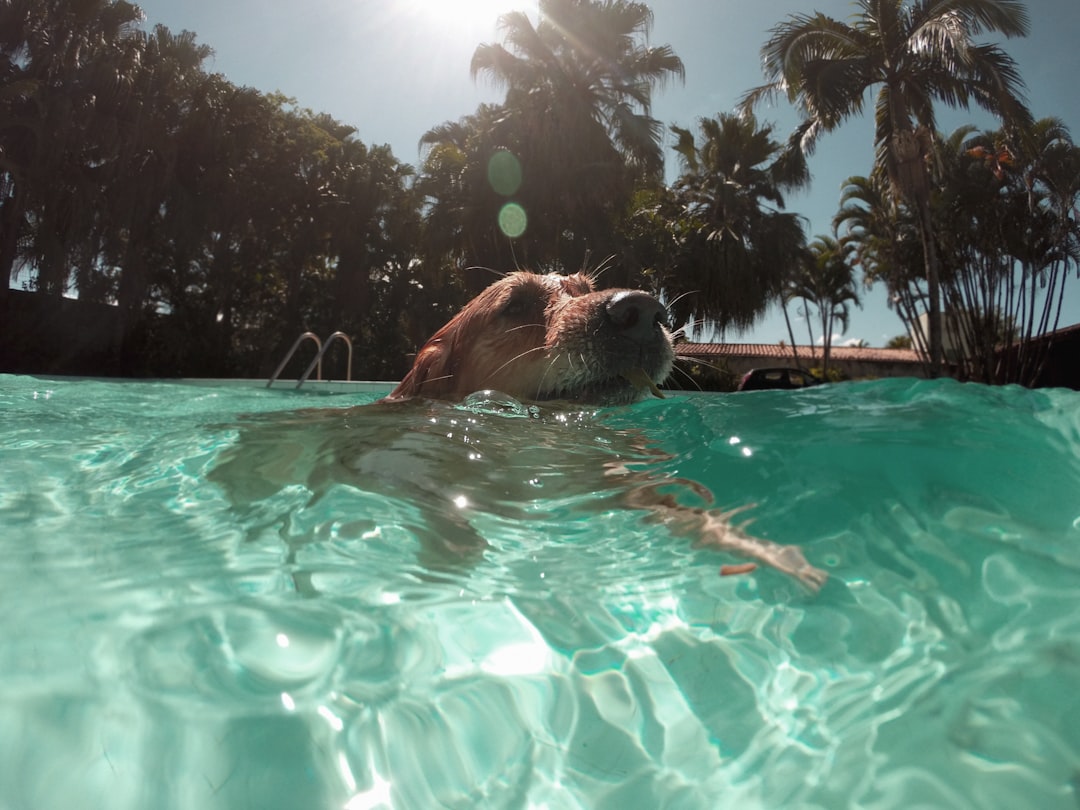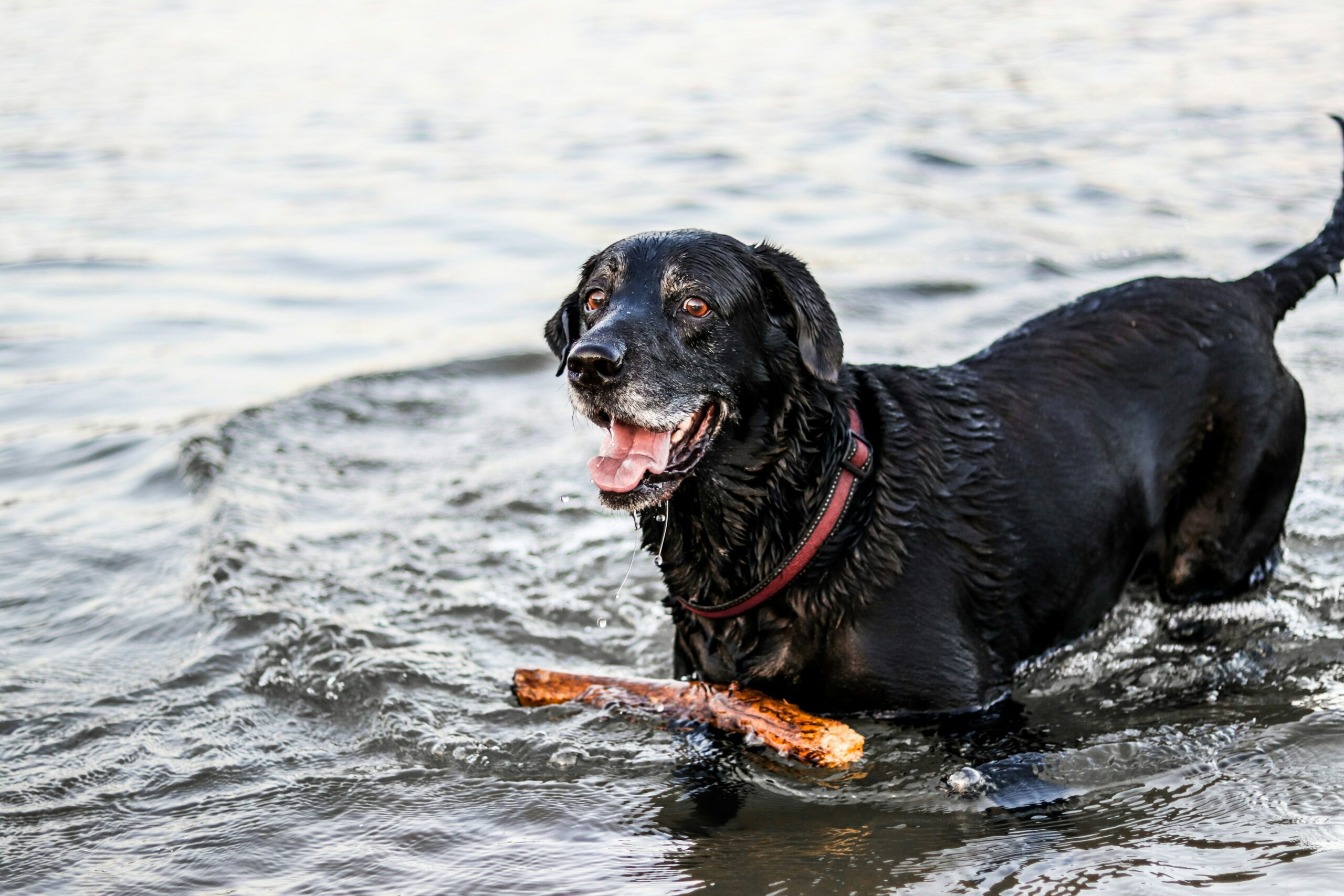- You are here:
- Home »
- Blog »
- Boston Dog Trainer »
- Swimming Success: How Dogs with Joint Issues Make Waves in Hydrotherapy
Swimming Success: How Dogs with Joint Issues Make Waves in Hydrotherapy
Swimming Success: How Dogs with Joint Issues Make Waves in Hydrotherapy
Discover how hydrotherapy, specifically swimming exercises, can improve the quality of life for dogs with joint or mobility issues, including arthritis and degenerative joint diseases, through inspiring success stories and tailored exercise plans.

Introduction to Hydrotherapy for Dogs with Joint or Mobility Issues
Hydrotherapy is a beneficial treatment for dogs with joint or mobility issues that involves swimming exercises in a controlled water environment. This form of therapy has gained popularity as a non-invasive and effective approach to managing arthritis, degenerative joint diseases, and other musculoskeletal conditions in dogs. By utilizing the properties of water, hydrotherapy can significantly enhance the overall quality of life for our canine companions suffering from mobility issues.
The gentle resistance of water during swimming exercises helps improve muscle strength and joint flexibility in dogs with osteoarthritis, contributing to their physical well-being and mobility [3]. For instance, a dog like Rusty, a Pomeranian with a dislocating knee, benefited greatly from hydrotherapy by regaining strength and mobility to move around comfortably. Such success stories highlight the transformative power of hydrotherapy in enhancing the lives of dogs with joint issues.
Moreover, the low-impact nature of swimming reduces stress on the joints, making it an ideal exercise for arthritic dogs. By engaging in hydrotherapy, dogs like Ellie, a Samoyed with hip dysplasia, have experienced improved mobility and strength, showcasing the positive impact of swimming on their overall health and happiness. These inspiring examples demonstrate how hydrotherapy can be a game-changer for dogs facing joint or mobility challenges, emphasizing the importance of incorporating this therapy into their care routine for optimal results.
Understanding Joint and Mobility Issues in Dogs
Arthritis and degenerative joint diseases are prevalent among aging dogs, causing discomfort, stiffness, and reduced mobility. These conditions can severely impact a dog’s ability to move freely, engage in physical activities, and experience a good quality of life. Symptoms like limping, difficulty rising, and reluctance to climb stairs are common indicators of joint issues in dogs.
Furthermore, joint issues in dogs can lead to muscle atrophy and decreased range of motion, affecting their overall well-being. The pain and stiffness associated with arthritis can result in behavioral changes, such as irritability or decreased interest in play. It’s crucial for pet owners to recognize these signs early on and seek appropriate treatment to improve their furry companion’s comfort and mobility levels. For instance, a dog like Max, a Labrador Retriever, may initially show signs of joint issues by hesitating to go on walks or exhibiting a reluctance to jump onto furniture, signaling the need for intervention through therapies like hydrotherapy.
Understanding the impact of joint and mobility issues on dogs can help owners proactively address these challenges and provide the necessary support to enhance their pets’ quality of life. Through proper management and suitable interventions like hydrotherapy, dogs with arthritis or degenerative joint diseases can regain mobility, alleviate pain, and enjoy an active lifestyle once again. By staying attuned to their pet’s physical cues and behavior changes, pet parents can take proactive steps to ensure their furry friends receive the care and treatment needed to maintain a happy and healthy life.
Benefits of Swimming for Dogs with Joint Issues
Swimming is not only a fun activity for dogs but also a highly beneficial form of exercise for those with joint issues. The low-impact nature of swimming helps to strengthen muscles and improve joint range, making it an ideal workout for arthritic dogs. Additionally, swimming aids in increasing cardiovascular fitness, contributing to the overall health and well-being of dogs with joint problems. For example, consider a Labrador Retriever named Max who was diagnosed with osteoarthritis. Through regular swimming sessions, Max experienced improved muscle strength and joint mobility, allowing him to enjoy walks and playtime more comfortably.
Moreover, hydrotherapy, including swimming exercises, plays a significant role in managing pain and inflammation in dogs with joint issues. By engaging in swimming sessions, dogs like Daisy, a Golden Retriever with hip dysplasia, have shown remarkable progress in reducing discomfort and enhancing their mobility. The therapeutic benefits of hydrotherapy go beyond physical exercise, as it also promotes mental stimulation and emotional well-being in dogs. This holistic approach to improving the quality of life for dogs with joint problems highlights the importance of incorporating swimming into their exercise routine.
 Inspiring Success Stories of Dogs Thriving Through Hydrotherapy
Inspiring Success Stories of Dogs Thriving Through Hydrotherapy
One heartwarming example of the transformative effects of hydrotherapy is demonstrated through Rusty, a Pomeranian who faced challenges due to a dislocating knee. Rusty’s journey with hydrotherapy not only improved his mobility but also allowed him to regain strength and confidence in his movements. This success story emphasizes how hydrotherapy can play a crucial role in helping dogs like Rusty overcome joint issues and lead a happier, more active life.
Similarly, Ellie, a Samoyed struggling with hip dysplasia, found solace and progress through hydrotherapy sessions. By engaging in swimming exercises and underwater treadmill therapy, Ellie experienced enhanced mobility and strength, enabling her to enjoy her daily activities with greater ease and comfort. Ellie’s story serves as an inspiring testament to the positive impact hydrotherapy can have on dogs facing mobility challenges, showcasing the resilience and adaptability of our canine companions. These success stories underscore the importance of hydrotherapy as a holistic and effective approach to managing joint issues in dogs, ultimately contributing to their overall well-being and quality of life.
Precautions and Best Practices for Swimming with Arthritic Dogs
When it comes to swimming with arthritic dogs, it is crucial to introduce this form of hydrotherapy gradually, allowing the dogs to acclimate to the water and the exercise routine. By starting slowly, you can monitor their comfort level and adjust the intensity accordingly, ensuring that the experience is not only beneficial but also enjoyable for the dogs. For example, Rusty, a Pomeranian with a dislocating knee, was introduced to swimming in a controlled environment, gradually building his strength and confidence in the water, which significantly improved his mobility over time.
In addition to a gradual introduction, providing a warm water environment can be highly beneficial for arthritic dogs engaging in swimming exercises. The warmth of the water helps to relax muscles, increase blood flow, and reduce joint stiffness, allowing the dogs to move more freely and comfortably during their hydrotherapy sessions. For instance, Ellie, a Samoyed with hip dysplasia, experienced remarkable improvements in her mobility and pain management when swimming in warm water, as it alleviated the pressure on her joints and facilitated a wider range of motion. Furthermore, the use of life jackets can offer additional support and security, especially for dogs with limited mobility or balance issues, ensuring a safe and controlled swimming experience.
Lastly, supervision is a key best practice during hydrotherapy sessions with arthritic dogs to prevent accidents and ensure their safety in the water. Having a trained professional oversee the swimming sessions can help in monitoring the dog’s movements, adjusting the exercises as needed, and providing immediate assistance if required. By maintaining a safe and supportive swimming environment through gradual introduction, warm water therapy, and proper supervision, arthritic dogs can reap the full benefits of hydrotherapy, improving their joint mobility, muscle strength, and overall quality of life.
Consultation and Tailored Exercise Plans for Arthritic Dogs
When it comes to designing an exercise plan for arthritic dogs, consulting with a veterinarian or animal physiotherapist is crucial. These professionals can assess the individual needs of the dog, taking into account factors like the severity of arthritis, age, overall health, and specific joint issues. For instance, a veterinarian may recommend a combination of swimming sessions, underwater treadmill therapy, and targeted stretching exercises to improve muscle strength and joint flexibility in a dog with osteoarthritis. By tailoring the exercise plan to the unique requirements of each dog, it ensures a personalized approach that maximizes the benefits of hydrotherapy.
Moreover, a holistic approach to managing joint problems in dogs involves more than just hydrotherapy. It often includes a combination of low-impact exercises, such as gentle walks or therapeutic massages, alongside swimming sessions. Additionally, joint supplements and medications prescribed by the veterinarian can complement the hydrotherapy treatment by providing pain relief and supporting joint health. For example, a dog with degenerative joint disease may benefit from a regimen that includes swimming to improve mobility, joint supplements to reduce inflammation, and regular check-ups to monitor progress. This comprehensive approach aims to enhance the overall well-being of arthritic dogs and promote a better quality of life.
Regular follow-up appointments and adjustments to the exercise plan are essential to evaluate the dog’s response to hydrotherapy accurately. By monitoring the dog’s progress, veterinarians and physiotherapists can make necessary modifications to the exercise routine, ensuring that it remains effective and safe for the dog. This proactive approach not only tracks improvements in muscle strength and joint mobility but also allows for early intervention if any issues arise during the hydrotherapy sessions. Ultimately, the collaboration between pet owners, healthcare professionals, and hydrotherapy experts plays a vital role in optimizing the treatment and ensuring the best outcomes for dogs with joint issues.


